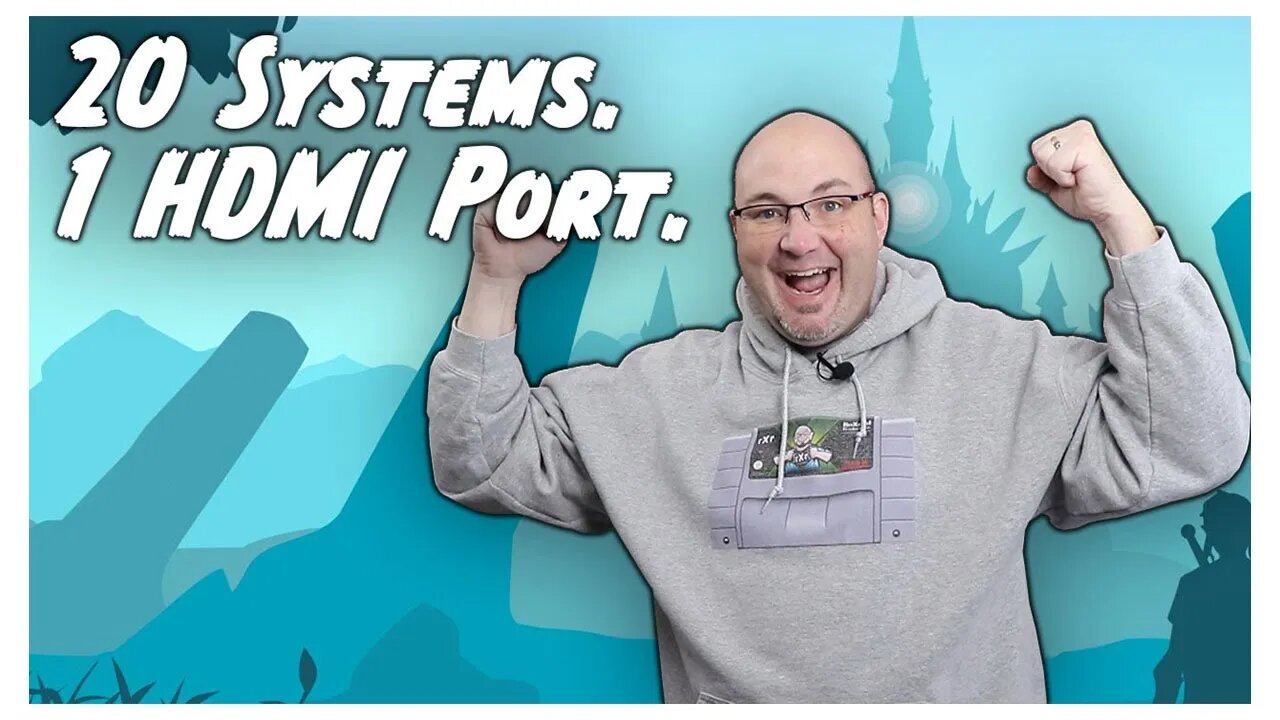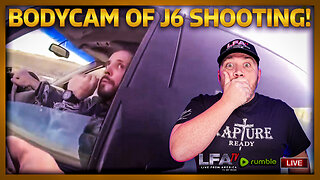Premium Only Content

Over 20 Retro Game Systems Connected to 1HDMI Port! How To Organized Your Inputs! #Shorts
In this #YouTube #Shorts episode, I show you how I keep track of how my 20+ systems all connect to 1 HDMI input!
I have worked hard over the past few years to connect as many modern and retro systems to my Capture Card to be able to play, record, and stream footage. It's not been easy, but there are certainly things I have done to make things much easier. With 13 active HDMI inputs, 8 Component inputs, and who knows who many wires connected, it can be a mess. Here's how I keep things organized.
RetroTink 2x Pro:
I have my Super NES, N64 and Sega Saturn connected to this via a 4-Way Component Switcher
RetroTink 2x MultiFormat:
Since the Multiformat handles resolutions of 480 and higher better, I have my PS2, Wii, and Original Xbox connected via Component Cables through another 4-way Switcher
OSSC:
This is dedicated to my Sega systems since it tends to struggle with Nintendo's off-spec signals. My Master System is connected via an Insurrection Industries SCART cable, my Genesis/Sega CD/32X is connected to the component inputs via HD Retrovision Component Cables, and my Dreamcast connects via VGA Cables.
HDMI Inputs:
The rest of my collection connects via HDMI and my Monoprice 8x1 HDMI Switch. That includes my GameCube via an Eon Gaming GCHD MkII, my HDMI Modded NES, PS3, PS4, Xbox One S, Wii U and more. I do have 1 unused HDMI port which I will either use my RetroTink SCART on with my Super Famicom, or use my original RetroTink to connect my Sharp Famicom Twin Turbo, I haven't decided.
Remembering where all this is connected, that's the real challenge. Using a label maker, I label each device with what is on each input. The label maker I have has both clear and white backing, and I opted for clear to hide them a little more. I can still make them out, but if you're not looking you'll never know they were there.
#EonGaming #HDRetrovision #OSSC #RetroTink
The footage used in this review are used under the Fair Use laws, referenced below:
https://www.law.cornell.edu/uscode/text/17/107
Notwithstanding the provisions of sections 106 and 106A, the fair use of a copyrighted work, including such use by reproduction in copies or phonorecords or by any other means specified by that section, for purposes such as criticism, comment, news reporting, teaching (including multiple copies for classroom use), scholarship, or research, is not an infringement of copyright. In determining whether the use made of a work in any particular case is a fair use the factors to be considered shall include—
(1) the purpose and character of the use, including whether such use is of a commercial nature or is for nonprofit educational purposes;
(2) the nature of the copyrighted work;
(3) the amount and substantiality of the portion used in relation to the copyrighted work as a whole; and
(4) the effect of the use upon the potential market for or value of the copyrighted work.
The fact that a work is unpublished shall not itself bar a finding of fair use if such finding is made upon consideration of all the above factors.
(Pub. L. 94–553, title I, § 101, Oct. 19, 1976, 90 Stat. 2546; Pub. L. 101–650, title VI, § 607, Dec. 1, 1990, 104 Stat. 5132; Pub. L. 102–492, Oct. 24, 1992, 106 Stat. 3145.)
-
 20:46
20:46
RoXolidProductions
11 months ago $0.02 earnedThis Nintendo Switch Grip Comes IN CLUTCH + Blows the Split Pad Out of the Water
2075 -
 49:29
49:29
The Rubin Report
2 hours agoDetails About Joy Reid’s Weeping Farewell No One Noticed with Co-Host Megyn Kelly
9.74K12 -
 LIVE
LIVE
Benny Johnson
1 hour ago🚨Epstein Files COVERUP EXPOSED: FBI Sabotaging Trump, DELETING Evidence?! | Tapes 'MISSING'?!
15,087 watching -
 59:29
59:29
Steven Crowder
3 hours agoCrafting Crowder's Comedy Gold | Behind the Scenes
137K73 -
 2:06:44
2:06:44
Tim Pool
2 hours agoTHE END OF THE WEST, Will We Survive Without Christianity? | The Culture War with Tim Pool
56.8K21 -
 LIVE
LIVE
Right Side Broadcasting Network
2 hours agoLIVE: President Trump and Ukrainian President Zelenskyy Meet and Hold a Press Briefing - 2/28/25
5,675 watching -
 LIVE
LIVE
LFA TV
15 hours agoBODYCAM FOOTAGE OF TRAFFIC STOP! | LIVE FROM AMERICA 2.28.25 11AM
4,690 watching -
 LIVE
LIVE
The Big Mig™
4 hours agoGlobal Finance Forum From Bullion To Borders We Cover It All
2,015 watching -
 LIVE
LIVE
Tudor Dixon
1 hour agoThe Last Supper with Chris Tomlin | The Tudor Dixon Podcast
141 watching -
 48:58
48:58
BonginoReport
4 hours agoFake Epstein Files Fallout + Will Cain on the Government’s Internal Civil War (Ep.150) - 02/28/2025
101K227